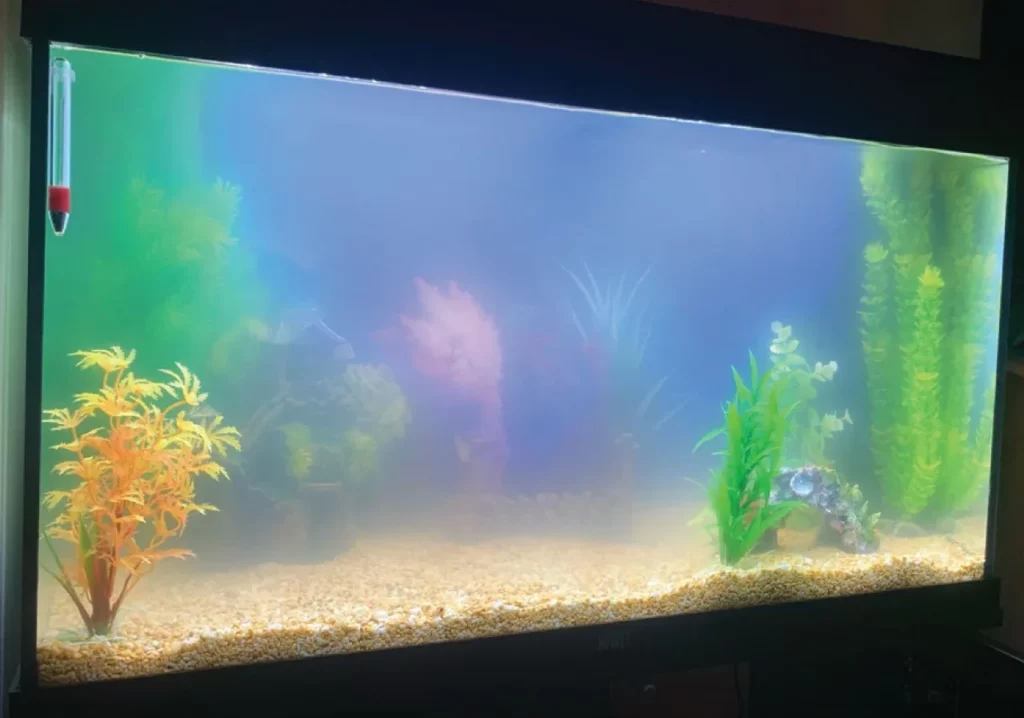Have you ever wondered if baking soda can lower the alkalinity in your fish tank? Well, you’re in the right place to find out! In this article, we will explore the effects of baking soda on alkalinity levels and discuss whether it can be used as a solution to lower alkalinity in fish tanks. So, let’s dive right in!

Understanding the Role of Alkalinity in Fish Tanks
Before we delve into the impact of baking soda on alkalinity, let’s first understand what alkalinity means in the context of fish tanks. Alkalinity refers to the water’s ability to resist changes in pH levels. It is an essential parameter to monitor, as it directly affects the well-being of your aquatic pets.
Comparing Pool Chemicals and Fish Tank Maintenance
In swimming pool maintenance, various pool chemicals are used to regulate pool water chemistry. Muriatic acid and soda ash are common examples, adjusting pH level, total alkalinity, and pool alkalinity to ensure safe and enjoyable swimming.
Interestingly, fish tank maintenance shares similarities. Adding baking soda to a fish tank can lower alkalinity, mirroring the role of pool chemicals in balancing water. However, the delicate nature of fish tanks requires careful consideration of how much baking soda to use.
Unlike pools, fish are sensitive to sudden changes, and adding baking soda must be done gradually. To raise alkalinity in a fish tank, you can gradually add baking soda.
Exploring the Effects of Baking Soda on Alkalinity Levels
Baking soda, scientifically known as sodium bicarbonate, is a naturally alkaline compound with a pH of 8. When added to your fish tank, baking soda can indeed raise both the pH and alkalinity levels. This can be beneficial for maintaining stability and clarity in the water.
Benefits of Using Baking Soda to Lower Alkalinity
While baking soda is commonly used to raise alkalinity, there is some debate about its effectiveness in lowering alkalinity levels. The truth is, baking soda has a buffering capacity, meaning it can help stabilize pH levels and prevent sudden shifts. In some cases, this may indirectly lead to a slight reduction in alkalinity levels over time.
Step-by-Step Guide on How to Use Baking Soda to Lower Alkalinity in a Fish Tank

If you decide to try using baking soda to lower alkalinity in your fish tank, here is a simple step-by-step guide to follow:
- Test your water: Start by testing the alkalinity levels in your fish tank using a reliable testing kit.
- Determine the desired level: Research the specific alkalinity requirements for the type of fish you have and determine the target range.
- Calculate the amount: Based on the test results and desired level, calculate the amount of baking soda needed. Consult a reliable online calculator or follow the instructions provided on the product packaging.
- Add gradually: Slowly add the calculated amount of baking soda to the tank, distributing it evenly. It’s essential to take it slowly to avoid sudden shifts in pH levels.
- Re-test and monitor: After adding the baking soda, re-test the alkalinity levels to ensure they are within the desired range. Regularly monitor the pH and alkalinity levels to maintain stability.
Precautions and Considerations when Using Baking Soda in a Fish Tank
While baking soda can be a useful tool in maintaining alkalinity levels, it’s important to exercise caution and consider the following:
- Acclimate your fish: Sudden changes in pH and alkalinity can stress your fish. Slowly acclimate them to any adjustments to minimize their discomfort.
- Consult with a professional: If you’re unsure about using baking soda or have specific concerns, it’s always a good idea to seek advice from a knowledgeable fish tank specialist or veterinarian.
Balancing pH Levels in Aquatic Environments
pH level is critical in both swimming pools and fish tanks. In pools, it affects water clarity and swimmer comfort. Muriatic acid or sodium carbonate (soda ash) might be used to raise pH if needed.
Similarly, pH level in a fish tank directly impacts aquatic life. While adding baking soda primarily affects alkalinity in a pool, it can indirectly influence pH level by stabilizing water chemistry. Understanding this connection is key to maintaining a healthy environment in both settings.

Alternative Methods to Lower Alkalinity in Fish Tanks
Besides the use of baking soda, there are other methods you can explore to lower alkalinity in your fish tank. Some common alternatives include the use of peat moss, reverse osmosis water, or specialized commercial products designed specifically for this purpose.
Conclusion: Making an Informed Decision on Using Baking Soda to Lower Alkalinity in Your Fish Tank
In conclusion, while baking soda is mainly used to raise alkalinity levels, it may have a subtle impact on lowering alkalinity over time due to its buffering capacity.
However, it’s important to consider alternative methods and consult with experts to ensure the well-being of your fish. Remember to monitor water parameters regularly and make adjustments accordingly, always keeping your aquatic pets’ health and happiness a top priority.
So, if you’re contemplating using baking soda to lower alkalinity, give it a try, but proceed with caution and seek professional advice whenever needed.


